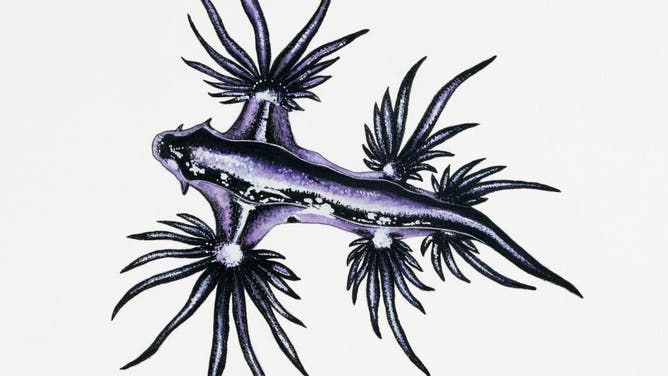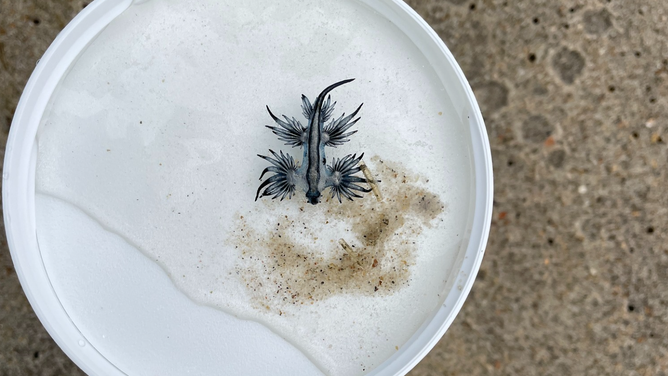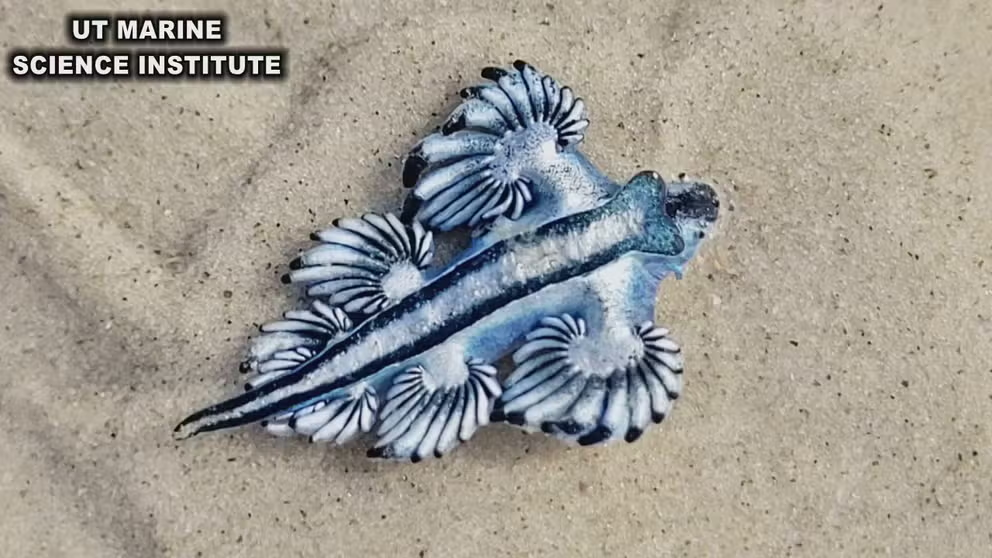Popular beaches closed after warnings of stinging blue dragon sea slugs
Blue dragon sea slugs' venom is very powerful, and touching one, even through gloves, can cause a painful sting.
FILE: Venomous blue dragons wash on shore along Texas beaches
The unusual-looking creatures can be identified by wing-like fins and bizarre blue markings. Venomous sea slugs have recently been spotted along beaches on North Padre and Mustang Islands.
GUARDAMAR DEL SEGURA, Spain – Recent sightings of a tiny blue sea slug with a powerful sting have closed beaches in southeastern Spain.
Blue Dragon sea slugs are around an inch long and have unique blue markings and tendrils that look like wings, creating the slug's dragon-like appearance.
According to police in Guardamar del Segura, beaches in the area were closed twice in just one week at the end of August because of the sea slug's presence.
WHAT ARE THESE ALIEN-LOOKING SLUGS THAT CAN WASH ONTO BEACHES?

Blue dragon or Floating sea slug
(Photo by DeAgostini/Getty Images / Getty Images)
On Aug. 20, the police took to Facebook to warn of the danger. Three days later on Aug. 23, the beaches were closed again for swimming.
"Due to the massive appearance of the Blue Dragon (Glaucus atlanticus), and for citizen safety reasons, SWIMMING is PROHIBITED on all beaches of the municipality until further notice," they said.
Blue dragon sea slugs' venom is very powerful, and touching one, even through gloves, can cause a painful sting.
According to the Bureau of Ocean Energy Management, blue dragon sea slugs are ocean drifters, meaning they're carried by wind and ocean currents.
FIRST US HUMAN CASE OF FLESH-EATING PARASITE DETECTED IN MARYLAND

The National Park Service that during periods of strong, onshore winds, Blue Sea Dragons or what are known as Glaucus atlanticus can wash ashore beaches.
(Cape Hatteras National Seashore / FOX Weather)
Jace Tunnell, with the Harte Research Institute, told FOX Weather the sea slugs feed off Portuguese man o' war, which are closely related to jellyfish and are typically found offshore.
Man o' war can wash up on beaches and deliver a painful sting to someone who touches one. Their venomous food sources are also why the sea slugs can sting if you pick one up or step on a blue dragon.
If you do happen to be stung by a blue dragon sea slug, vinegar and warm water can help provide pain relief.
